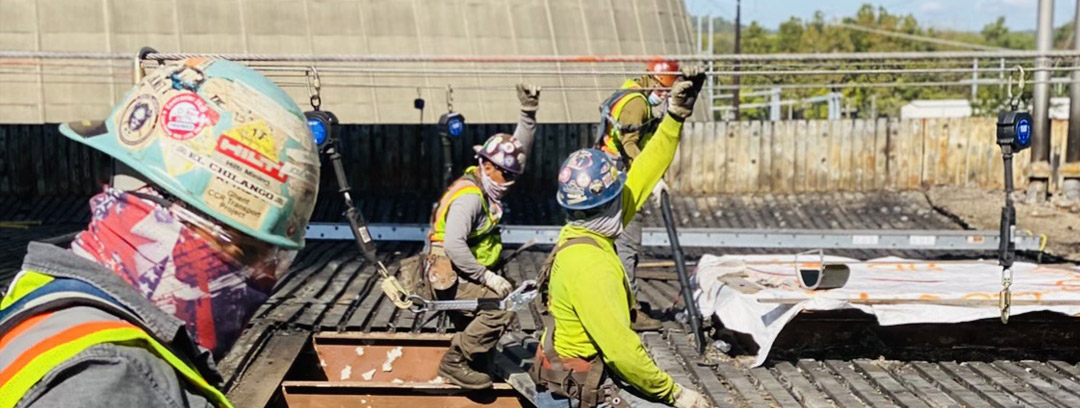At JGM, safety is not negotiable. We exceed safety standards in everything we do by staying up to date on the latest safety trends in the turnkey construction and steel fabrication industries. A trend our team has recently noticed (and has been requested by clients) is the use of self-retracting lifelines versus lanyards. To learn more about fall protection safety gear, including the difference between these two devices and when each should be used, keep reading!
Lanyards vs. Self-Retracting Lifelines: What’s the Difference?
A safety lanyard is a set length of rope or webbing that is worn by an individual working at a height (i.e., the roof) and fixed to an anchor point (i.e., a beam) to protect them from falling. Shock-absorbing lanyards can allow for up to six feet of free fall distance before activating and another three and a half feet of deceleration distance before arresting a fall.
On the other hand, a self-retracting lifeline is produced using webbing, wire rope, or a cable that retracts into a housing unit. While the housing unit is connected to an anchor point, the other end is worn by an individual working at a height. In the event of a fall, a mechanism inside the housing unit will lock and arrest the fall (much like a car seatbelt functions). This device offers 100 percent continuous tie off fall protection and requires less than two feet to arrest free falls.
Which Personal Fall Protection Equipment is Recommended?
While each jobsite and situation will be different, many companies are requesting workers wear self-retracting lifelines instead of shock-absorbing lanyards. While self-retracting lifelines may be a bit pricier, they offer many benefits that should not be compromised when considering safety. First, a self-retracting lifeline will prevent an individual from falling to the ground if they have 15 feet or less of free fall. Plus, the breaking mechanisms in this gear can arrest falls within inches, not feet (unlike the lanyards). The lightweight, compact nature of the self-retracting lifelines allow for better mobility on the job and the retracting housing unit prevents extra rope from laying around which reduces tripping hazards. All in all, these benefits have many companies retiring the shock-absorbing lanyards and making the transition to self-retracting lifelines.
When Should Self-Retracting Lifelines be Used?
According to the National Institute for Occupational Safety and Health (NIOSH), falls remain the leading cause of work-related deaths in construction, accounting for more than one in three of the total number of fatalities in the industry. To prevent fall-related injuries and death, it is critical personal fall protection equipment be worn anytime an individual is working at a height. It is recommended self-retracting lifelines be used when working at a height of six feet or more and anywhere 100 percent tie off is required.
Uncompromising Safety is Job #1
At JGM, we take pride in utilizing the latest safety equipment and sending our team members home safely each night. Visit the Our Difference page to learn more about our commitment to safety!

